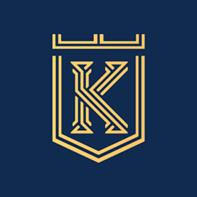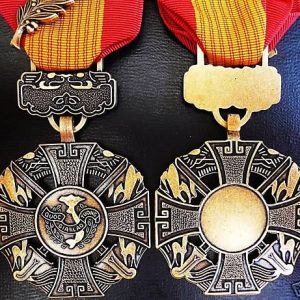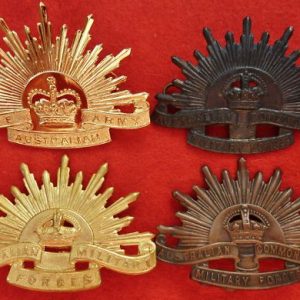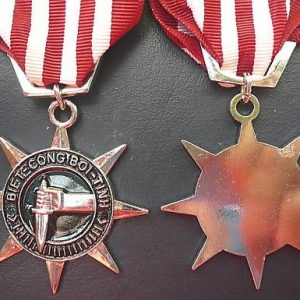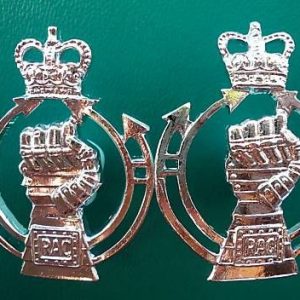SOLD
- You cannot add "AUSTRALIAN ANZAC WW1 & WW2 NURSES SILVER RISING SUN UNIFORM HAT CAP BADGE" to the cart because the product is out of stock.
AN EXTREMELY RARE AUSTRALIAN MILITARY MEDAL FOR THE “BATTLE OF THE HOOK”, BEING ONE OF THE LAST FIGHTING ACTIONS OF THE KOREAN WAR
An extremely rare Australian Military Medal for the “BATTLE OF THE HOOK”, being one of the last fighting actions of the Korean War to Private George Kent, 2nd Battalion, The Royal Australian Regiment. Medal group consists of a QEII Military Medal, impressed named to 1/400713 PTE. G.E. KENT. R. AUST. R; 1939/45 Star, Pacific Star, 1939/45 War Meal, Australian Service Medal, (these last 4 unnamed as issued); 1945-75 Australian Active Service Medal, with bar Korea named to 1/400713 G.E. KENT, 1950-53 Korean War Medal, UN Korea Medal (these last 2 unnamed as issued) & TWO 1945-75 Australian Service Medals, one...
$18,000.00
SOLD
An extremely rare Australian Military Medal for the “BATTLE OF THE HOOK”, being one of the last fighting actions of the Korean War to Private George Kent, 2nd Battalion, The Royal Australian Regiment. Medal group consists of a QEII Military Medal, impressed named to 1/400713 PTE. G.E. KENT. R. AUST. R; 1939/45 Star, Pacific Star, 1939/45 War Meal, Australian Service Medal, (these last 4 unnamed as issued); 1945-75 Australian Active Service Medal, with bar Korea named to 1/400713 G.E. KENT, 1950-53 Korean War Medal, UN Korea Medal (these last 2 unnamed as issued) & TWO 1945-75 Australian Service Medals, one with bar SW Pacific correctly named to S4691 G.E. KENT (for his RAN service) and the other with bar Korea correctly named to 1/400713 G.E. KENT (for his Army service). Court mounted for display. Medals come with complete copied service record. George Edward Kent was born in Brisbane of the 13th June 1922. He first saw service with the Royal Australian Navy during WW2, from October 1940 to February 1946. His service papers show service aboard H.M.A.S. Westralia. In the early part of the war and the later stages of the war he was onboard H.M.A.S. Quickmatch. His papers show him qualifying in Gunnery. On the 13th June 1952, he enlists in the Australian Army giving his profession as ‘Horse Breaker’ and ‘Kangaroo Shooter’. He was posted to the 2nd Bn, R.A.R. as a rifleman. It was during ‘The Hook’ action that George Kent was dangerously wounded with a gunshot to the right shoulder and forehead. He also earned his Military Medal as an immediate award for holding off repeated Chinese attacks armed with his Bren gun only. Kent was recommended for the award by the Australian Governor General on the 23rd January 1954, being Gazetted 15th June 1954, with Kent being awarded the Military Medal at Government House, Sydney, by the G.G. Lt. General Sir John Northcott on the 14th April 1955. An extract of the battle details the events that led to Kent’s award of the Military Medal: ‘A few weeks later, on the night of 24 July 1953, the Chinese attacked the UN positions on The Hook in an effort to gain more ground prior to the signing of the armistice agreement. Over the course of two nights, waves of Chinese soldiers attacked the Australian and American positions in frontal assaults aimed at overwhelming the defenders through sheer weight of numbers. In between attacks, artillery and mortar attacks were launched during the day to soften up the defences. In an effort to hold the line reinforcements from 'D' Company, 3 RAR and the 1st Battalion, Durham Light Infantry were brought up and placed under 2 RAR command before the attacks were finally beaten off on the morning of 26 July. The number of Chinese dead was estimated between 2,000 and 3,000, while 2 RAR’s casualties for the two nights were five killed. 2Bn RAR fought with tenacity and outstanding steadfastness particularly at the Battle of the Hook from 24th to 26th July where it earned the Battle Honour "Samichon”. Of the 45 Military medals awarded to Australian’s during the Korean War, only 6 were awarded to the 2nd Battalion, The Royal Australian Regiment.
| Weight | 1 kg |
|---|---|
| Dimensions | 40 × 30 × 30 cm |
